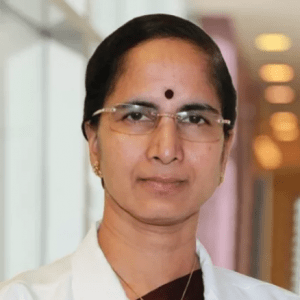Endometrial Polyp
Endometrial polyp is a non-cancerous growth in women, attached to the inner wall of the womb [uterus]. It is common in reproductive-aged women, or women who have completed their menopause. The polyp size varies. These endometrial polyps are also known as “uterine polyps”. They come from the tissue that lines the uterus [also called the […] Read More
Top Doctors For Endometrial Polyp Treatments
Top Hospitals For Endometrial Polyp Treatments
Endometrial Polyp
- Transvaginal Ultrasound.
- Curettage
- Hysteroscopy
- Sonohysterography
- Endometrial biopsy.
- Watchful waiting.
- Medication.
- During hysteroscopy, instruments inserted through the hysteroscope make it possible to remove polyps. The removed polyps will be sent to the lab, for microscopic examination.
- Endometrial ablation involves destroying the uterus lining.
- Local removal of benign endometrial polyps using curettage or hysteroscopy.
- Use of vitamin E
- Use of ginger
- Garlic
- Gingko Biloba
- Feverfew
- Vegetables
- Cooked beans
- Fish
- Regular gynecological check-ups
- Avoid obesity or overweight
- Reduce stress in other to reduce the increase in blood pressure
- Avoid taking tamoxifen to treat breast cancer
- Avoid smoking.
Symptoms
ENDOMETRIAL POLYP SYMPTOMS
Uterine polyps symptoms may not be prominent, especially when you have small polyps or just one. Some pointers to uterine polyps include the below:
- Frequent irregular menstrual bleeding with variable heaviness and durations. This is the most common sign of endometrial polyps.
- Menorrhagia or prolong and heavy menstrual bleeding.
- Bleeding or spotting between your menstrual periods.
- Vaginal bleeding after menopause.
- Difficulty getting pregnant.
- Regular miscarriages.
- Infertility.
In some cases,
- Bleeding after sex
- Abdominal pains
- Prolapses as the polyp comes out through the cervix.
Causes
ENDOMETRIAL POLYP CAUSES
The cause of uterine polyps is not known. It may be linked to the changes in the hormonal levels of the woman affected.
Each month, your hormonal level rises and falls, causing the lining of your uterus to thicken and shed afterward, during your period. When too much of the uterine lining grows, polyps are formed soon after.
Certain conditions might promote the formation of polyps. These may include:
- Age.
The formation of uterine polyps is more common in women from the age of 40 to the 50s. which may be due to the changes in estrogen levels that occur just before and during menopause.
- Being perimenopausal or postmenopausal
- High blood pressure.
- Drugs for breast cancer, such as tamoxifen.
- Obesity.
FAQ
Can cervical polyps be a sign of cancer?
Cervical polyps are usually not cancerous [they are benign] and can occur alone or in groups. Most polyps are small, about 1cm to 2cm long. Because rare types of cancerous conditions can look like polyps, all polyps should be removed and examined for the signs of cancer.
What size of uterine polyps is dangerous?
The size of endometrial polyps may be relevant, and those above 15mm are more likely to lead to malignant transformation. However, this thought is controversial, and others have found no link between the size of polyps, hypertension, abdominal uterine bleeding, and malignant transformation.
Can you tell if a uterine polyp is cancerous by looking at it?
It is rare to find cancerous polyps. If the polyps are not causing any issues, monitoring them over time is a reasonable approval. If you develop symptoms such as abnormal bleeding, the polyps should be removed and evaluated, to confirm that there is no evidence of cancer.
Can a benign uterine polyp turn malignant?
The overgrowth of cells in the lining of the uterus [endometrium] leads to the forming of uterine [endometrial] polyps. These polyps are usually benign [non-cancerous], although some can eventually build up into cancer [these are known as pre-cancerous polyps].
Are giant uterine polyps cancerous?
A giant polyp is an abnormal female genital tract pathology, usually arising more often from the cervix than the endometrium. It is a great masquerader of cervical or endometrial malignancy. It can lead to a diagnostic dilemma and aggressive interventions uncalled for.
How common are uterine polyps?
They are quite very common especially benign uterine polyps with about 1 in every 100 women developing uterine polyps before the age of 30.
What are the foods that cause uterine polyps?
Foods that can increase the risk of uterine polyps include red meat, bacon, sausages, and hotdogs.
Can uterine polyps burst and bleed?
Uterine polyps can burst and bleed and can result in excessive menstrual bleeding or vaginal bleeding and spotting. Sometimes it may even result in bleeding after sex.
Can uterine poly grow back after removal?
It is quite unusual for uterine polyps to grow back after an effective and efficient removal although some factors may stimulate its growth again and have a 2.5 to 4.5% rate of recurrence but at a different location.
Do uterine polyps cause discharge?
Uterine polyps could cause occasionally bloody discharge especially those found on the cervix.






















































































































































